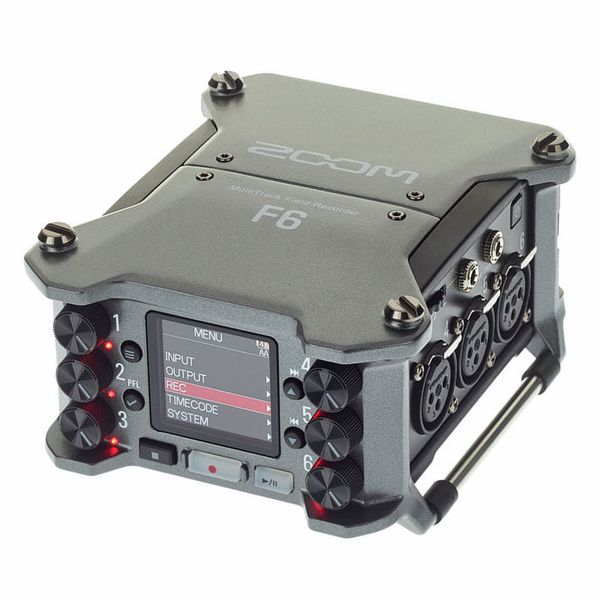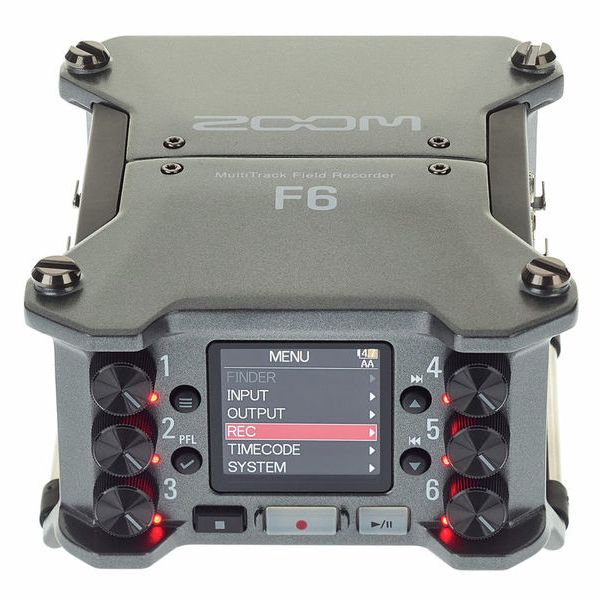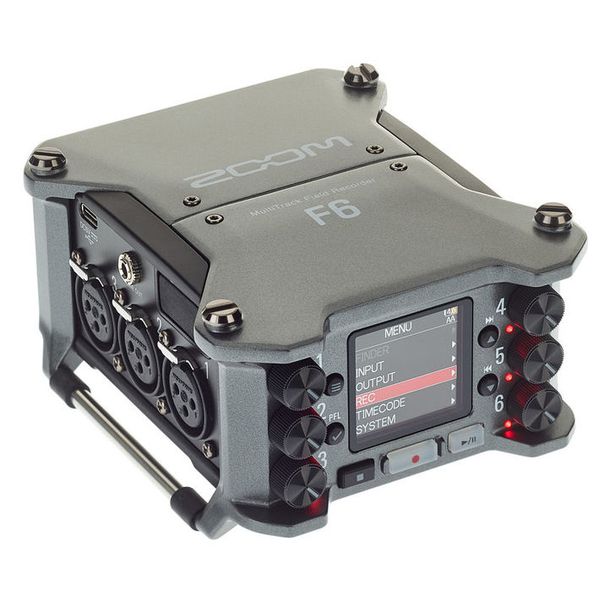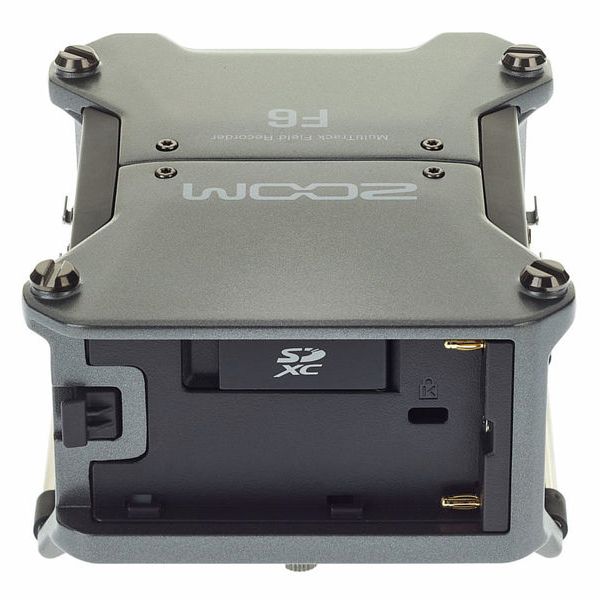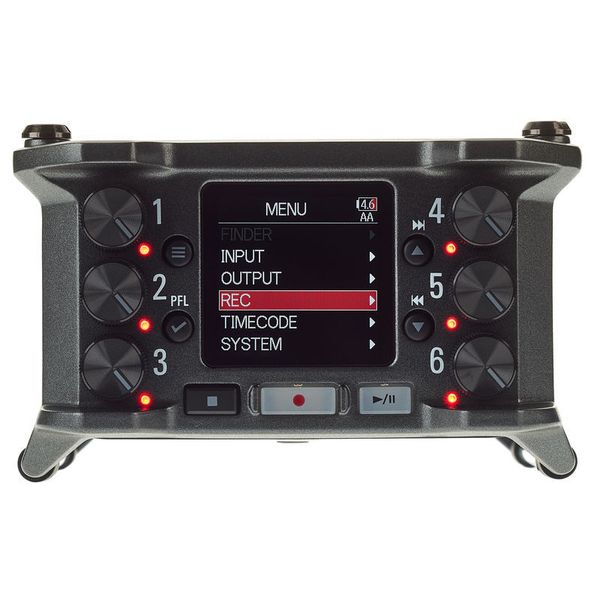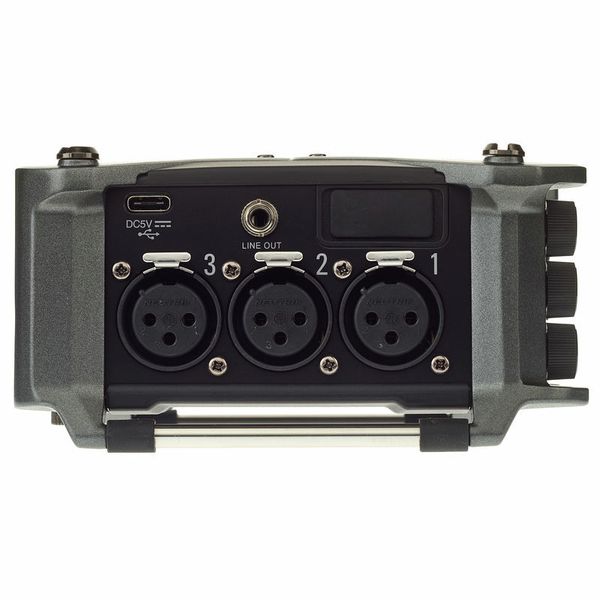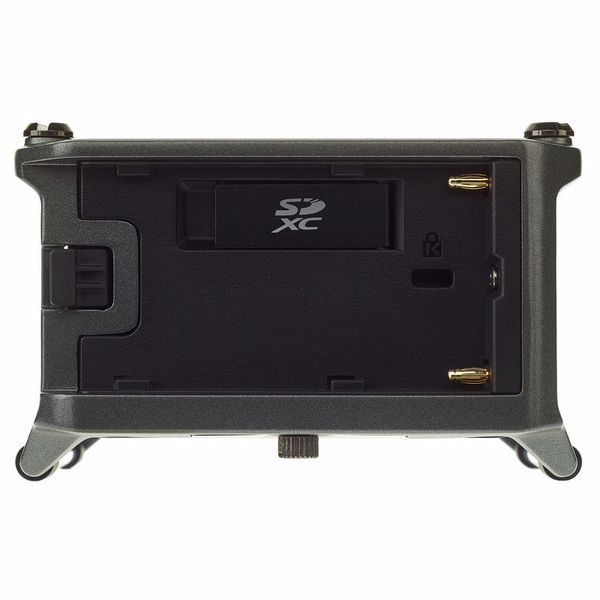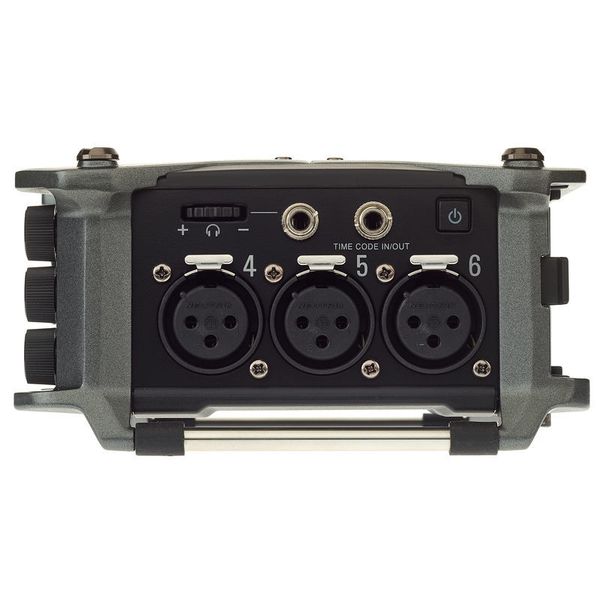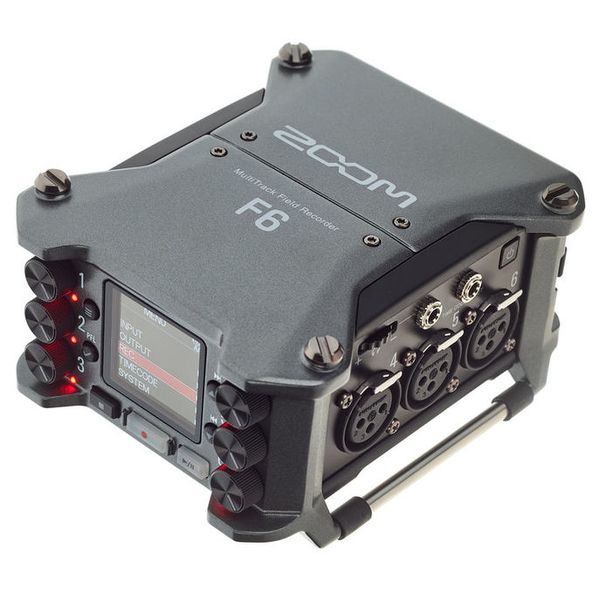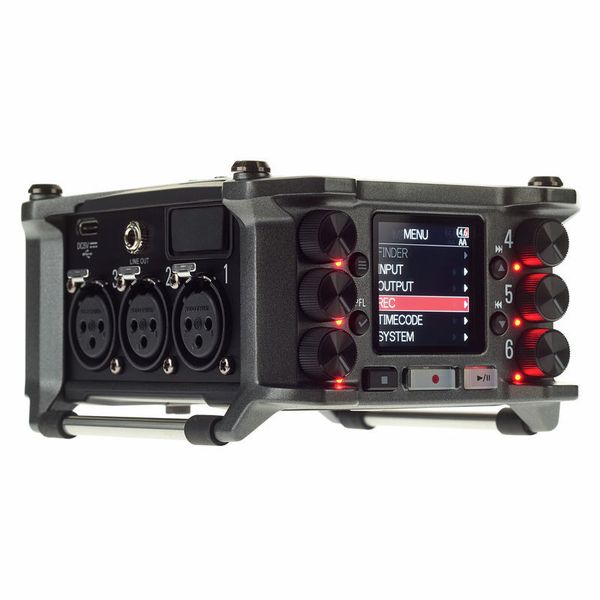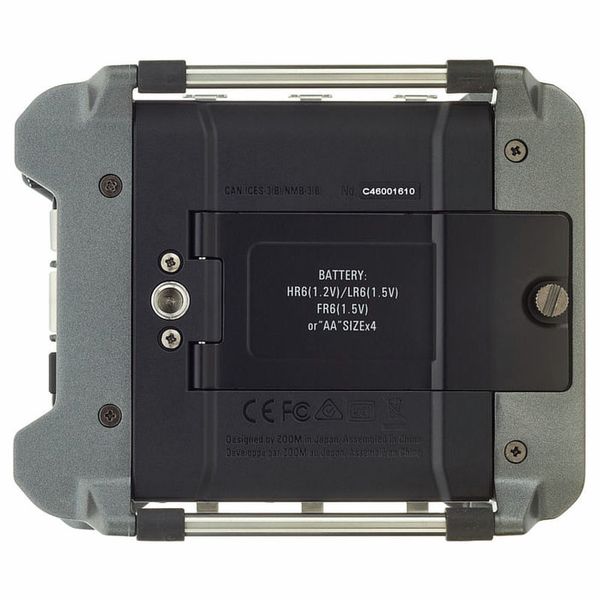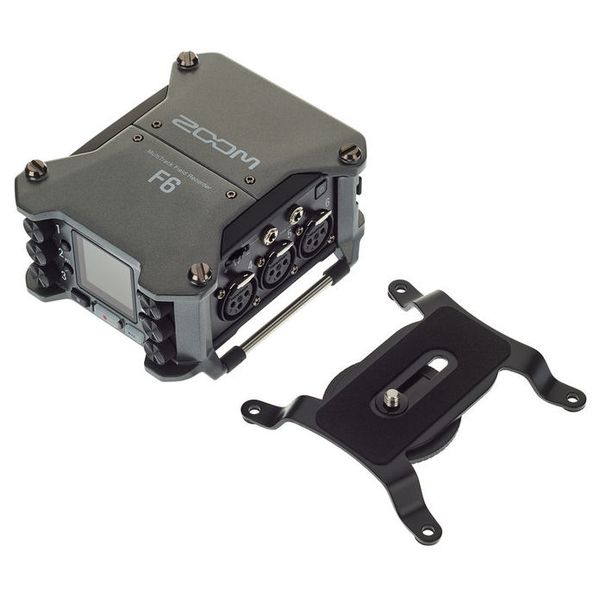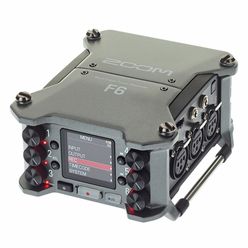Multitrack Field Recorder
- 6 Channels
- 14 Tracks
- 32 Bit float recording via dual AD converter
- 6 Inputs: XLR female
- Compact and light aluminium housing
- High-quality microphone preamplifier with up to 75 dB gain
- Inherent noise: -127 dBu (A-weighting, Gain = 75dB, 150 Ohm source impedance)
- With phantom power (+48 V / +24 V)
- Look-ahead hybrid limiter with one millisecond time offset to avoid clipping
- Simultaneously record onto SD card and computer via USB connection
- Recordings up to 32 bit / 96 kHz or 24 bit / 192 kHz
- Works as a 6 in / 4 out USB audio interface with max. 96 kHz
- Time code input and output via 3.5 mm TRS jack
- 3.5 mm stereo jack output
- 3.5 mm stereo headphone output
- 3 Power options: 4 x type AA batteries (not included), Zoom AD-17 power supply (optional) or Sony L-series batteries (optional)
- Slot for SD/SDHC/SDXC cards with up to 512 GB
- Remote control via free Zoom F Control iOS app (requires optional Zoom BTA-1 Bluetooth adapter)
- Controllable via optional zoom F-Control FRC-8
- Dimensions (W x D x H): 100 x 119.8 x 62.9 mm
- Weight: 520 g
- Includes camera mount adapter and operating instructions
- Suitable bag: Article no. 484615 (not included)
- Suitable case: Article no. 489626 (not included)
Produkt dostępny od
Październik 2019
Numer artykułu
467020
Jednostka sprzedaży
1 szt.
Integrated Stereo Microhone
No
Recording Tracks
6
Microphone Inputs
6
48 V Phantom power
Yes
Line Inputs
6
Storage Medium
SD/SDHC/SDXC Card
Headphone connection
Yes
Integrated Speaker
No
Resolution max.
32 bit
Max. Sample Rate
192 kHz
Limiter
Yes
Max. Memory
512
Recording Format
wav, mp3
Power Feed
Power Supply, Batterie, Accu
Dimensions
100 x 120 x 63 mm
Weight
520 g
Included In Delivery
Camera Manual
Pokaż więcej
Zestawy promocyjne i oferty





